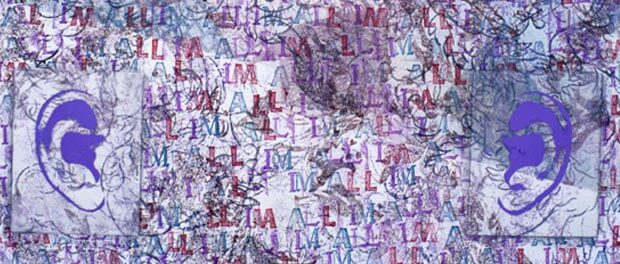 I heard it before I quite realized what was happening. A brief slurp, a quick sucking noise, and my right leg was swallowed up to the knee.
I heard it before I quite realized what was happening. A brief slurp, a quick sucking noise, and my right leg was swallowed up to the knee.
A few weeks ago my husband, Victor, and I were winding our way up to the top of a 300-meter cliff on the northwestern Irish coast. The path near the top was muddy and torn up by mountain bikers. Not quite long-legged enough to step over a large puddle, I thought I’d step off the trail to avoid the muck. Now I was stuck in a bog up to my knees.
Victor pulled me out amid more sucking noises and much laughter. We walked on, my boots squelching with every step, my now-moss-decorated pants flapping wetly in the stiff breeze.
The view from the top was astonishingly beautiful, but my most potent memories of this hike are all about the sounds. It was so quiet we could hear the waves crashing in the cove a thousand feet below us. So quiet we could hear the sheep tearing off the grass as they grazed. And the squelching of my boots.
I took many photos on this trip—of the views and the sheep and the tumbled-down walls of chapels—but after that walk I also began recording short snippets of sounds. The sounds of the birds on the Burren, the Irish pipes wailing in a pub late one night, rocks tumbling in the waves in a cove, the voices of young men in the cool of a Barcelona cloister.
The practice of recording just the sounds characteristic of a place, without any images, heightened my awareness not only of the soundscape, but of the entirety of a scene. To snap a photo needed only a few milliseconds and so little of my attention that I occasionally took photos without intending to.
The recordings required me to stand silently for 10 or more seconds, to be tuned in to the rhythm of the waves or the patterns in the birdsong, so I could catch them at their peaks. I needed to watch for the wind and be aware of who was walking past. I had to listen, to look, and to be attentive to the tiny clues.
In his Spiritual Exercises, St. Ignatius recommends bringing all our senses to bear when we pray, urging us to let what lies in two dimensions—whether in the pages of Scripture or in the photos we take—take on flesh. Ignatius’s composition of place means more than seeing the scene; hear the voices, and smell the rain-soaked earth. It reminds me that I am not meant to be an observer from a distance, pushing my life into tiny frames held at arm’s length, but called to immerse myself wholly into God’s work—to allow myself to be pulled in with a slurp, soaked in the graced reality of creation.





Michelle,that is a beautiful article. Thank you for the way you remind us in the last paragraph that we are not meant to be observers.
I was told by my first spiritual advisor many years ago I had to first learn to listen before I could listen to learn. Back then I believed he had a screw loose. Today I understand! Also words don’t mean anything but they mean everything! How true!
Michelle, your reflection help me gain a greater understanding of St. Ignatius’ teaching on finding God in all things. Thank you.
Michelle: Many years ago, a brother deacon’s young son heard me preach and told me after Mass, “first time I hear, first time I like. This is the first time I check out your blog and I could repeat Eric’s words. You opened up new vistas for me. Many thanks and God bless.
Michelle,
Thanks for taking us along this beautiful journey! I appreciated the vivid reminder of the squeaky boots as well as the soft voice of our Lord. God in all things!